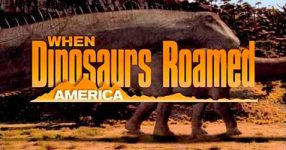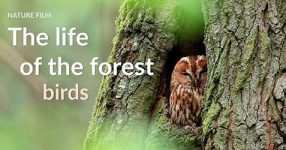In the vast tapestry of Earth’s history, the origins of insects, birds, and mammals remain a captivating enigma. Thanks to groundbreaking discoveries and cutting-edge technology, scientists are now piecing together the intricate puzzle of evolution. Join us on an exploration through time and discovery as we delve into the mysteries of “A New Prehistory.”
The Carboniferous Chronicles: Colossal Insects and Oxygen Abundance
Around 300 million years ago, the Carboniferous period witnessed a remarkable spectacle of colossal insects dominating the Earth. Picture dragonflies the size of hawks and 10-foot-long centipedes thriving in an atmosphere rich with 35% oxygen. Amidst towering trees fueled by this surplus of oxygen, creatures such as Arthropleura and Meganeura, the largest flying insect with a 25-inch wingspan, flourished. However, the heightened oxygen levels also led to frequent forest fires, creating challenges for these colossal inhabitants.
As time marched on, declining oxygen levels and shifting atmospheric conditions ushered in the gradual decline and mysterious disappearance of these colossal insects. While it was initially believed that oxygen concentration directly influenced insect size, recent discoveries in the Permian period in France have presented a more intricate extinction narrative. Fossils of giant dragonflies persisting even as oxygen levels dropped hint at a complex interplay of factors in their demise.
Feathered Dinosaurs and the Liaoning Legacy
Transitioning to the Jurassic period, the Liaoning region in China emerged as a critical player in unraveling the evolutionary journey from feathered dinosaurs to modern birds. Fossil beds in this region, famously referred to as the “feather dinosaurs Pompei,” provide a unique window into the transition from simple filaments to complex feathers. A striking example of this transition is the discovery of a four-winged theropod, showcasing the trial-and-error nature of dinosaur flight. In 2013, feathered fossils found in Siberia’s Kulinda challenged previous beliefs, suggesting that feathered dinosaurs predated both carnivores and herbivores.
The Liaoning region’s significance doesn’t end there, as it also challenges assumptions about the emergence of mammals. Fossils of placental mammals, including Juramaia sinensis, have been found to appear at least 35 million years earlier than previously believed. Ongoing studies in Liaoning, employing advanced CT scanning and genetic analyses, delve into the intricacies of early mammalian evolution. Adaptations such as tree-climbing abilities and insect-eating strategies provided placental mammals with evolutionary advantages, leading to an ecological explosion.
The Cretaceous Revelation: Eomaia scansoria and the Mammalian Connection
In the Cretaceous period, the discovery of Eomaia scansoria further enriched our understanding of early mammals. Exceptionally well-preserved fossils have allowed scientists to reconstruct a detailed picture of this early mammal’s anatomy, shedding light on their evolutionary history. This ongoing research reshapes our comprehension of prehistoric life, connecting the stories of giant insects, feathered dinosaurs, and the dawn of mammals during the age of dinosaurs.
As we journey through “A New Prehistory,” we are reminded that the tapestry of Earth’s history is far from complete. With each groundbreaking discovery and technological advancement, we inch closer to unraveling the secrets of evolution and understanding the origins of the incredible diversity of life on our planet. The mysteries of insects, birds, and mammals continue to captivate the scientific community, propelling us into a future where the missing branches of the tree of life are gradually revealed.
The evolution of life on Earth is a story filled with surprises, challenges, and endless possibilities. “A New Prehistory” beckons us to explore these enigmas and embrace the ever-evolving narrative of our planet’s history.












